This area is one of the few places where the two railroad lines linking Philadelphia and Baltimore – Amtrak’s Northeast Corridor and CSX’s Philadelphia Subdivision – run close together and are readily accessible. At Perryville, Norfolk Southern’s Port Road Branch branches off the Northeast Corridor, following the east bank of the Susquehanna River north to Harrisburg and Enola, Pa. NS freights have trackage rights on Amtrak, as do MARC commuter trains operating between Perryville, Baltimore, and Washington, D.C.
But the main attraction are the two impressive railroad bridges spanning the Susquehanna River – photographic landmarks where one can witness Amtrak’s flashy new Acela Express, lowly drills, and just about everything in between.
Nearly a mile upstream is the single-track CSX bridge, built between 1908 and 1910. Deck trusses carry the railroad tracks over portions of the river, and above Garrett Island in the middle of the Susquehanna, with two fixed through trusses spanning the navigable parts of the river. The bridge is approximately one mile long.
Good views of trains crossing both bridges can be had from city parks in Havre de Grace and Perryville, providing a variety of photo angles. The best places to view the railroad action on both sides of the river are highlighted below.
The first railroad through Perryville and Havre de Grace was the Philadelphia, Wilmington & Baltimore, completed in 1838. An independent bridge line, it jointly operated passenger trains between Jersey City, N.J. and Washington with the Pennsylvania Railroad (north of Philadelphia) and the Baltimore & Ohio (south of Baltimore).
Pennsy completed its own line between Baltimore and Washington in 1872 through subsidiary Baltimore & Potomac, and began offering through New Jersey-Washington service in 1873.
The PW&B’s strategic line was coveted by both the Pennsylvania and the Baltimore & Ohio. Pennsy bought the PW&B in 1881, giving it complete control over Washington-Jersey City railroad traffic until 1886 when B&O opened its own line to Philadelphia. (B&O reached New Jersey via a connection with the Philadelphia & Reading Railroad.)
Pennsy extensively upgraded its New York-Washington line between the late 1920s and the mid-1930s. Electrification was completed from Wilmington, Del., to Washington in February 1935.
In 1962, Baltimore & Ohio was purchased by the Chesapeake & Ohio. B&O became part of the Chessie System in 1973 and CSX Corporation in 1980, but maintained its own identity until 1987 when it was absorbed into CSX Transportation.
The Pennsylvania and New York Central formed Penn Central in 1968. Amtrak took over passenger service on the Northeast Corridor in May 1971, although Penn Central still owned the line. Penn Central became part of Conrail in 1976, at which time Amtrak acquired the Northeast Corridor. Conrail continued to operate local and through freight service on the line via trackage rights. Norfolk Southern assumed freight operations on the Northeast Corridor when it began operating its portion of Conrail in 1999.
The highlight of railroad operations in Perryville and Havre de Grace is the surprising variety of Amtrak trains racing between New York and Washington. Amtrak presently schedules close to 80 trains through the area on weekdays. That number drops by nearly a third on Saturdays, but picks up a bit on Sundays and holidays.
Sleek Acela Express trainsets appear regularly on high-speed, limited-stop runs between Washington, New York, and Boston. Other Northeast Corridor trains use Amfleet coaches powered by the railroad’s fleet of AEM-7 and newer HHP-8 electric locomotives.
Long-distance New York-Florida trains and the New York-New Orleans Crescent are often powered by P42 diesel locomotives and feature unique equipment such as Viewliner sleeping cars. Most of these trains pass in daylight hours.
The dozen or so Norfolk Southern freights that operate on the Northeast Corridor do so late at night or very early in the morning, except for an occasional late-running intermodal train to Baltimore. Unit coal trains destined for east coast power plants make up a majority of the Port Road’s traffic. Freights will round the wye at Perryville to enter or leave the Port Road. The exception is a Norfolk Southern local freight that runs in daylight to serve shippers on the Northeast Corridor.
CSX runs about 24 trains a day between Philadelphia and Baltimore. Typically, 6 to 10 trains can be seen during daylight hours, depending on the day of the week and the time of the year. Mornings are the best time to catch both eastbounds and westbounds.
The Philadelphia Subdivision has been freight only since April 1958, when B&O dropped passenger service east of Baltimore. The line is now single track with passing sidings.
Intermodal, autorack, and general merchandise freights use the line. Most daytime trains will be general merchandise or mixed freights. Although CSX tends to prefer 6-axle widecab diesels, the motive power on its trains can be almost anything in its own fleet or in its pool of leased locomotives. Unrepainted Conrail locomotives frequently show up.
Railfanning the area
Both Amtrak and CSX run in a nominal northeast-southwest direction. The downstream sides of both bridges are well-lit from the early morning through the early to mid-afternoon, although harsh midday lighting during the summer months makes photography difficult when standing on the riverbank and looking up at a train overhead. The upstream sides of the bridges will be well-lit in late afternoon and early evening from late spring through early fall.
The best overall seasons for photography in Havre de Grace and Perryville are late winter and early spring when the days start to get longer, but the leaves are not yet out on the trees. Even in winter, trees on Garrett Island will block views of the entire CSX bridge.
Amtrak, MARC, and Norfolk Southern radio transmissions can be heard on the Northeast Corridor road channel frequency of 160.920. NS freights on the Port Road Branch use 161.070. CSX uses road channel 160.230, and can use either 160.320, 160.410, or 161.100 as dispatching channels, so it’s a good idea to monitor all four of those frequencies. If you’re in the river valley, you may not pick up transmissions on the road channel too clearly, but should be able to hear conversations on the dispatcher’s channel.
You can use U.S. Route 40, the Pulaski Highway to drive between Havre de Grace and Perryville. A toll bridge crosses the Susquehanna River between the two railroad bridges. A word of caution: most of the streets in Perryville are narrow, and the speed limit is 15 mph.
Food and gasoline are available in Havre de Grace and Perryville, and lodging is available near the I-95 interchanges in Aberdeen and Perryville.





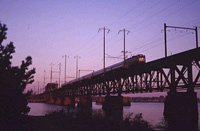
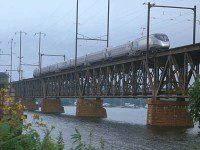
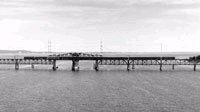
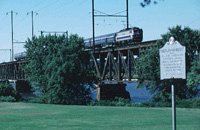


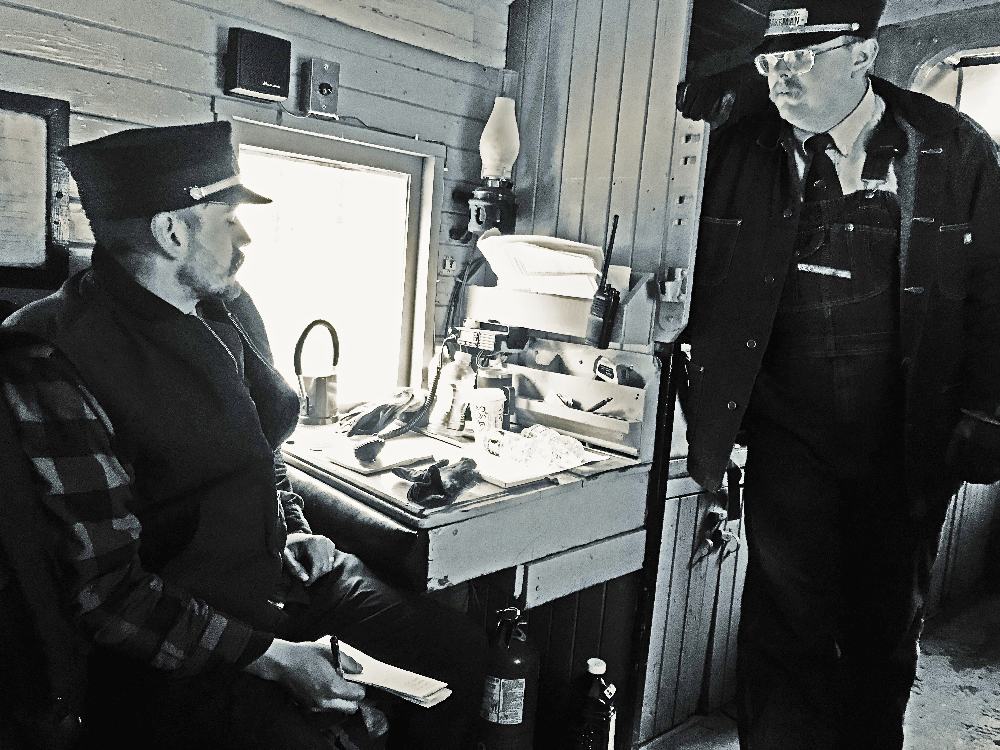
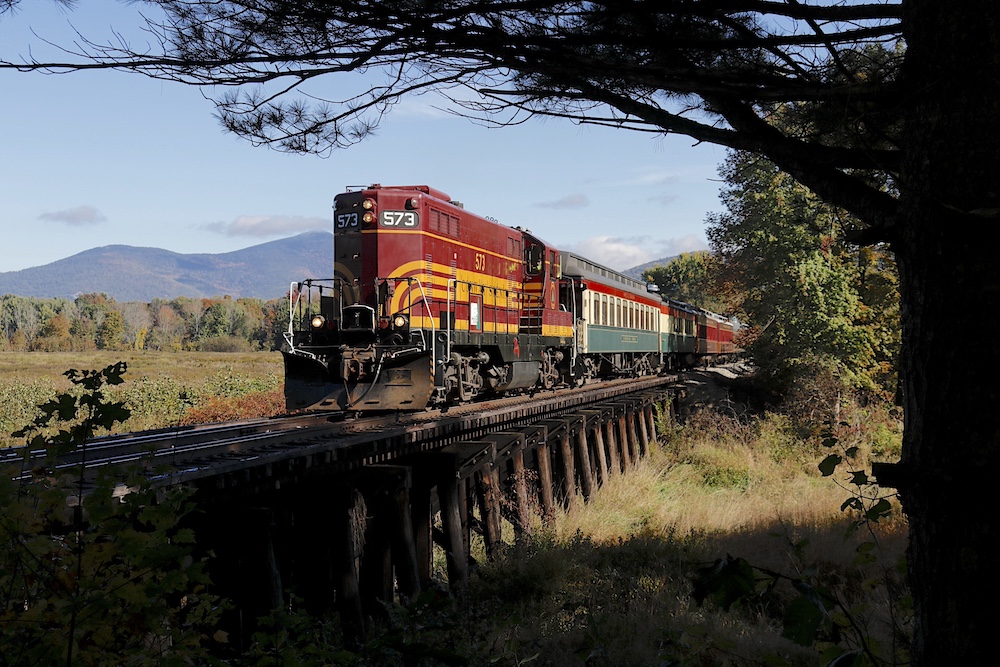
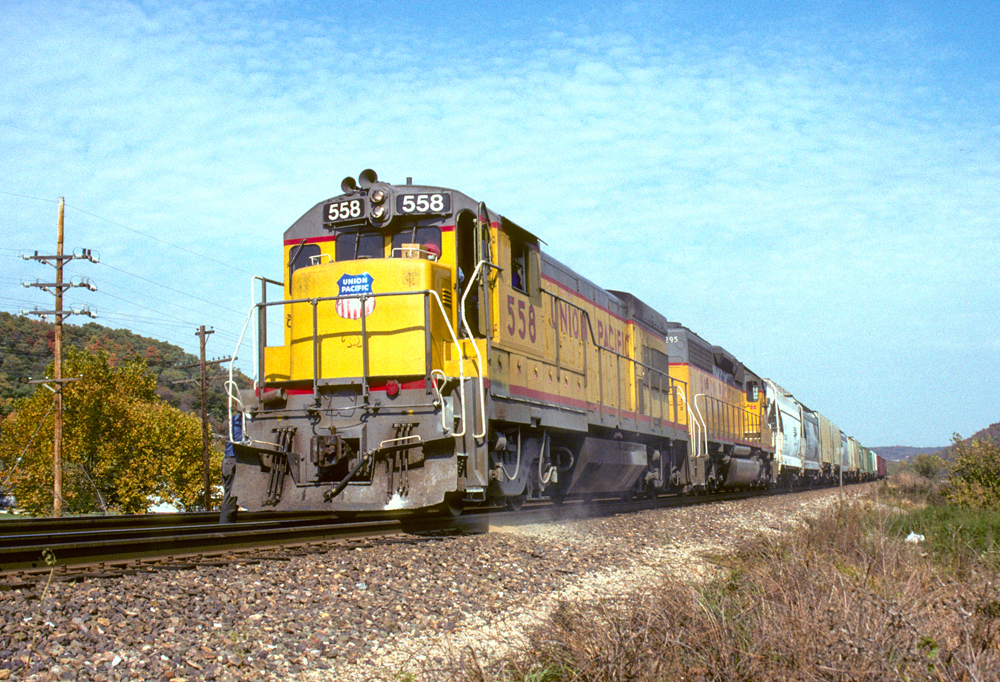
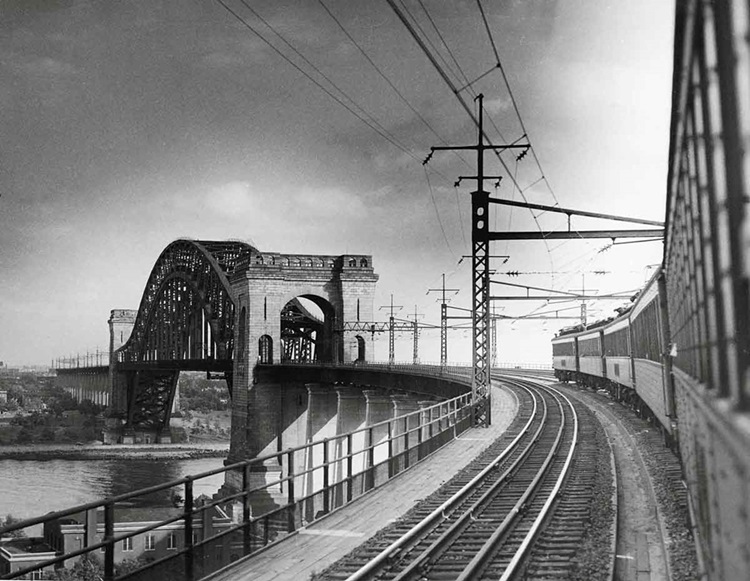




I loved the article-learned a lot. Thank you.